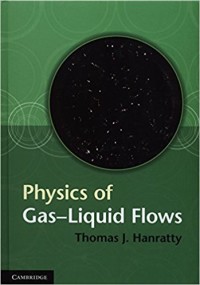Record Detail
Advanced Search
Text
Physics of Gas-Liquid Flows
Presenting tools for understanding the behaviour of gas-liquid flows based on the ways large scale behaviour relates to small scale interactions, this text is ideal for engineers seeking to enhance the safety and efficiency of natural gas pipelines, water-cooled nuclear reactors, absorbers, distillation columns and gas lift pumps. The review of advanced concepts in fluid mechanics enables both graduate students and practising engineers to tackle the scientific literature and engage in advanced research. It focuses on gas-liquid flow in pipes as a simple system with meaningful experimental data. This unified theory develops design equations for predicting drop size, frictional pressure losses and slug frequency, which can be used to determine flow regimes, the effects of pipe diameter, liquid viscosity and gas density. It describes the effect of wavy boundaries and temporal oscillations on turbulent flows, and explains transition between phases, which is key to understanding the behaviour of gas-liquid flows
Availability
| 1988/PUP/2016 | 532.56 HAN p c.1 | Perpustakaan Universitas Pertamina | Available |
| 3827/PUP/2017 | 532.56 HAN p c.2 | Perpustakaan Universitas Pertamina | Available |
Detail Information
| Series Title |
-
|
|---|---|
| Call Number |
532.56 HAN p
|
| Publisher | Cambridge University : Cambridge., 2013 |
| Collation |
xxiii, 333 p. : Illust. ; 26 cm
|
| Language |
English
|
| ISBN/ISSN |
9781107041202
|
| Classification |
532.56
|
| Content Type |
-
|
| Media Type |
-
|
|---|---|
| Carrier Type |
-
|
| Edition |
-
|
| Subject(s) | |
| Specific Detail Info |
-
|
| Statement of Responsibility |
-
|
| Department(s) |
Other version/related
No other version available











